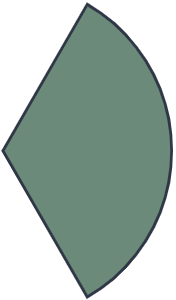Geometric Properties of Sections Calculator
Free online structural engineering calculator specialized in geometric properties of structural sections. Calculate centroid, moment of inertia and section modulus for structural profiles and basic geometric shapes with precision.
Structural Profiles
Simple Geometry
Circular and Polygons
Hollow Sections
What Properties Are Calculated?
Centroid Location
Coordinates of the geometric center of the section. Essential for determining the neutral axis location in bending analysis and structural design calculations.
Moment of Inertia
Second moment of area that quantifies the section's resistance to bending. Calculated with respect to the principal centroidal axes for accurate structural analysis.
Section Modulus
Critical ratio between moment of inertia and distance to the extreme fiber. Directly used to calculate maximum bending stresses in beam design.
Radius of Gyration
Measure of how the cross-sectional area is distributed relative to the axis. Fundamental parameter in buckling analysis and column design calculations.
Frequently Asked Questions
What are geometric properties of a cross-section?
Geometric properties are mathematical characteristics that define how a structural cross-section behaves under loading: centroid location, moment of inertia, section modulus, and radius of gyration.
Why is moment of inertia important in structural engineering?
Moment of inertia determines a beam's resistance to bending deformation. Higher values indicate greater stiffness and less deflection under the same applied moment.
How do you use section modulus in design?
Section modulus directly relates bending moment to maximum stress using σ = M/S. It's the primary parameter for checking allowable stress limits in beam design.
What's the difference between centroidal and principal axes?
Centroidal axes pass through the section's centroid. Principal axes are oriented where moments of inertia reach maximum and minimum values, with zero product of inertia.


























